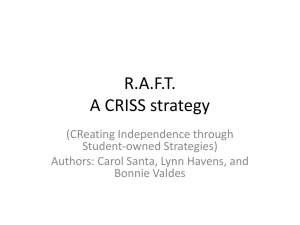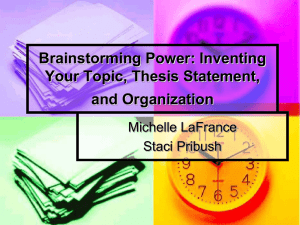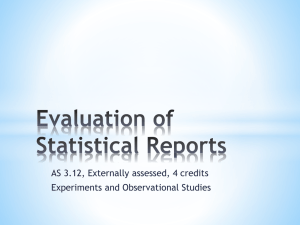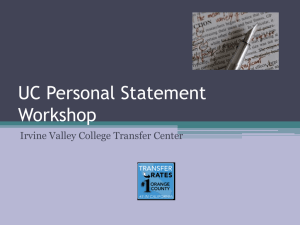Observational Writing: Techniques & Examples
advertisement
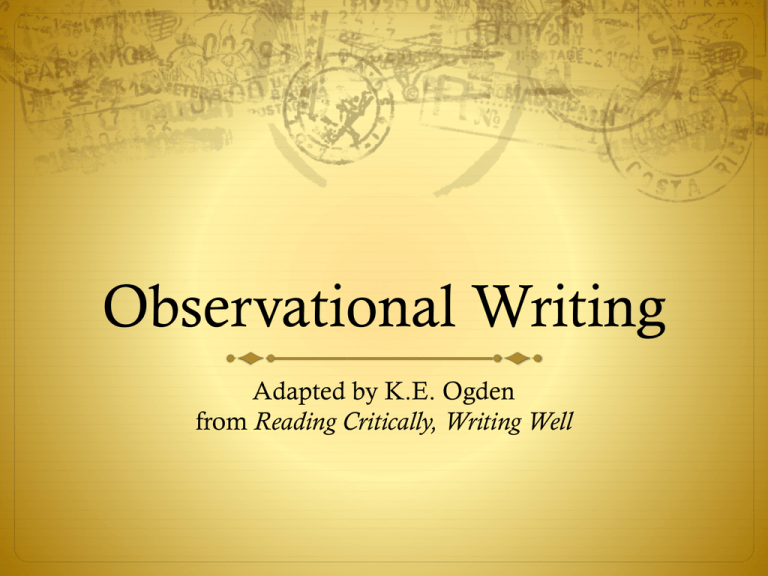
Observational Writing Adapted by K.E. Ogden from Reading Critically, Writing Well What is Observational Writing? Observational writing is writing “based on fresh observation or direct investigation.” Observational writing employs descriptive detail and the writer’s impressions to convey feeling and emotion An observational essay “seeks to inform readers about the subject but to present information in an engaging, even entertaining way.” What are the challenges of Observational Writing? Requires you to: --Pay close attention --Use your descriptive senses --Take a questioning and inquiring stance Good observational writing uses exhaustive notes compiled by the writer. These notes are analyzed and then synthesized to produce the best descriptive details for the subject of the writing. What types of writing situations might require Observational Writing? Examples of some writing situations: Profile a local artist for an Art History course Convey the feeling of a sports event for a Health & Science course or a Journalism class Investigate a local business for your Business class (ethnography) Interview a well-respected individual in a field of your choosing for a Social Studies course (feature) A Guide to Reading Observational Essays Reading observational essays and analyzing how these essays are put together will help us to write our own observational essays Reading “SOUP” from The New Yorker Read this essay like a writer: 1. Highlight the words and phrases the writer uses to describe Albert Yeganeh. (Not direct dialogue, but how the writer conveys an impression about Yeganeh). Read the essay like a writer: How do these descriptions of Yeganeh’s gestures and motions help readers to envision Yeganeh as he talks? Reading “Soup” from The New Yorker Reading Like a Writer: 2. Highlight, in a different color, words and phrases that describe the place: Soup Kitchen International. Reading Like a Writer: Which of the senses do each of the descriptions appeal to? Which descriptions stay with you? Why? Paired Break: Analyze “Soup” Skim the article and identify where the information came from—direct observation, interviews, background research Reread paragraphs 3 and 6 to see how the explanatory strategy of “listing” is used. Why do you think the author lists so many soups? Look at paragraph 2; what does the strategy of Compare/Contrast add to the essay? How is the essay organized? Organizing an observational essay usually relies on “topical” organization (related information is grouped together) OR “Narrative” information (in which a story is told) Which organizational strategy does “Soup” utilize? Outline each of the paragraphs to see how the writer is organizing each of the paragraphs. What is the organization of the entire essay? Which role will you perform? Spectator Observer Participant Observer Acts like a reporter Become an insider for a time in order to experience the “world” being observed Watches and listens but stays outside of the activity Join in on the activity, event, or place What are the advantages and disadvantages of each role? Which “role” has the writer of SOUP employed? What are its effects? Find a passage that supports this analysis. ASSUMPTIONS Another word for “bias” Conveys the writer’s attitudes about the event Conveys the writer’s feelings and emotions about the event --Look closer at SOUP. Use your highlighter to note where you see the writer’s assumptions, bias, feelings, and emotions in the work. Key Ideas Please quickly summarize the key ideas I’ve just shared about OBSERVATIONAL essays by writing a short paragraph describing the concepts important to a clear understanding of Observational Essays. Thank You!




